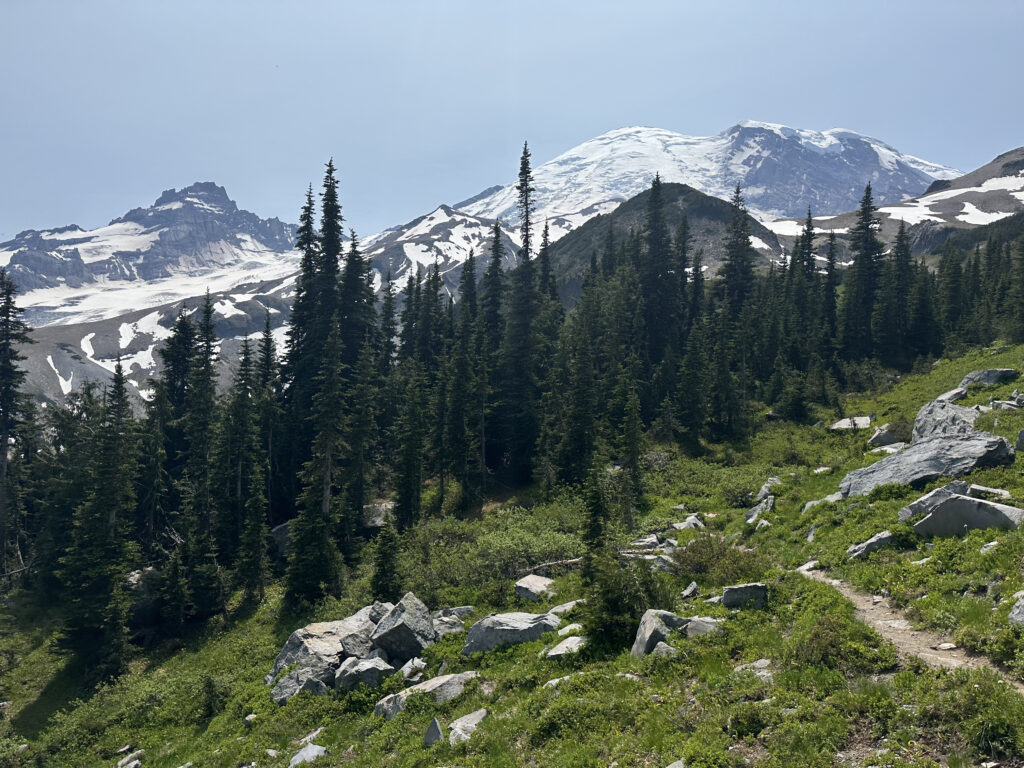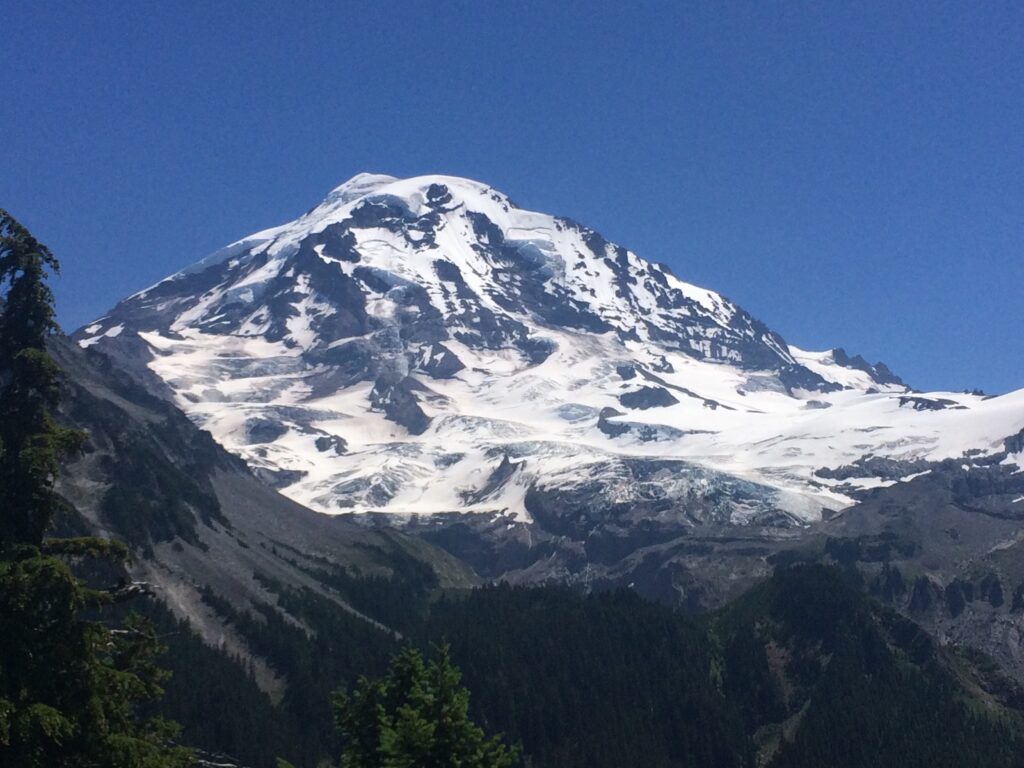Since moving to Seattle, I - like many before me - have fallen in love with Mt. Rainier. The mountain is massive and always looming over the horizon. Plus, as you get closer, you realize that there is a lifetime's worth of incredible terrain to explore.
Recently I found myself in the Seattle Public Library and stumbled across the Alpine Journal - specifically the 1872-74 volume.

This particular edition is of note because it documents the first ascent of Mt. Rainier.


ALPINE NOTES.
MOUNTAINEERING ON THE PACIFIC.
ASCENT OF MOUNT RAINIER, WASHINGION TERRITORY.—Mr. Coleman, whose ascent of Mount Baker, in British Columbia, was noticed lately in this Journal, is still active in promoting mountain exploration on the Pacific Coast. We have received from him some account of the first ascent of Mount Rainier, 12,300 feet, the highest mountain of the Cascade Range, distant 120 miles from Olympia, a settlement on the southernmost bay of the Gulf of Georgia. Mr. Coleman himself was unluckily separated from his friends, General Hazard Stevens and Mr. Van Trump, near the foot of the mountain, and was thus prevented from sharing in their ascent of the peak.
Having slept amongst the highest firs, the party started at 6 A.M.,
August 17, 1870, provided with ice-poles, an ice axe, 100 feet of rope, long spikes in their boots, a large canteen of water, a lunch, flags, and a brass plate inscribed with their names. The ascent offered all the
difficulties of a Swiss mountain. After five miles over snow-fields, they climbed a steep ridge of rocks for 500 yards, along the sides of a 1,000-feet precipice for 200 yards in mid-air upon a narrow ledge filled up with loose débris, then for 200 feet they ascended almost perpendicularly, by the gutter formed by the junction of the rocky precipice and the ice-fields projecting from the crown of the mountain, cutting steps in the ice and clinging to each projecting point of rock. The next 150 feet was made wholly upon the steep ice-fields by cutting steps, and the remainder of the ascent was made without material difficulty, over perhaps a mile and a half of snow, on ice-fields, across several crevasses, one of which they surmounted by throwing the rope round an overhanging pinnacle of ice and climbing up to the higher side of the crack some 12 feet by that means. In ten hours and a half they gained the southern peak, a long exceedingly steep narrow ridge striking out from the main dome. They next ascended the middle and highest peak, about a mile distant. Climbing over the rock ridge which crowns the summit, they found themselves within a circular crater, 200 yards in diameter, filled wit ha solid bed of snow, and with a rim of rocks projecting above the snow all around. As they crossed the crater on the snow, Mr. Van Trump detected the odour of sulphur, and the next instant numerous jets of steam, hot air, and thin smoke were observed issuing from the crevices of the rocks forming the rim on the northern side. Never was a discovery more welcome. Hastening forward, they both exclaimed, as they warmed their thoroughly chilled and benumbed extremities over one of old Pluto's fires, that here they would pass the night, secure against freezing to death; for it was now six o'clock, and impossible to descend the mountain before nightfall.
A deep cavern, extending under and into the ice, formed by the action of the heat, was found; a short distance within its mouth they built a wall of stones enclosing a space 5 feet by 6 feet around a strong jet of heat and steam. Ensconced within this shelter they discussed
their future prospects, while they warmed themselves at their natural register. The heat at the orifice was too great to bear for more than an instant but the steam wet them, the smell of sulphur nauseated
them; and, in short, they passed a most miserable night, freezing on one side and in a hot sulphur steam bath on the other. The wind outside roared and whistled, but secure within their cavern and their
wall it did not much affect them except when an occasional gust came down perpendicularly.
It is to be hoped that this expedition, as well as Mr. Coleman's other adventures amongst the mountains of North America, will, at some future time, be more fully described to English readers.

What masterful run-on sentences! More interesting is that they got the height of the mountain wrong by over 2,000 feet - the actual height of Mt. Rainier is 14,411. And that they spent the night huddled next to a thermal vent.

Hazard Stevens is a fascinating historical figure - he won the Medal of Honor and summited Rainier again at age 63. Maybe next summer I'll hike out to the monument honoring the camp he set up (partly described on Wikipedia).
There is no limit to what you can explore on Mt. Rainier
